RINNIG Pinball Simulator
Pinball "Minicab" with 24" monitor as playfield, VIsual Pinball software. Genuine plunger, buttons and legs. Arduino controller.
Pinball "Minicab" with 24" monitor as playfield, VIsual Pinball software. Genuine plunger, buttons and legs. Arduino controller.
To make the experience fit your profile, pick a username and tell us what interests you.
We found and based on your interests.
Swedish electronics retailer Kjell & Co featured my pinball machine in an episode of their Youtube channel from the 2016 Stockholm Maker Faire. It starts 8:26 into the video. Also mentioned on Kjell's website here.
I wasn't there, so my colleague Emil presents the machine.
I'll be showing Rinnig at the 2016 Stockholm Maker Faire, in Avalon Innovation's (my employer) stand.
Welcome!
To match the high contrast black and white color scheme of the cabinet, I dyed the lockdown bar with an oil based stain (Zar Oil-based wood stain, Charcoal).
I applied it with a rag, waited maybe ten minutes, then wiped off the excess and let it dry. Repeated three times to get a darkness that I liked. In reality, it looks a bit darker than in the photo:
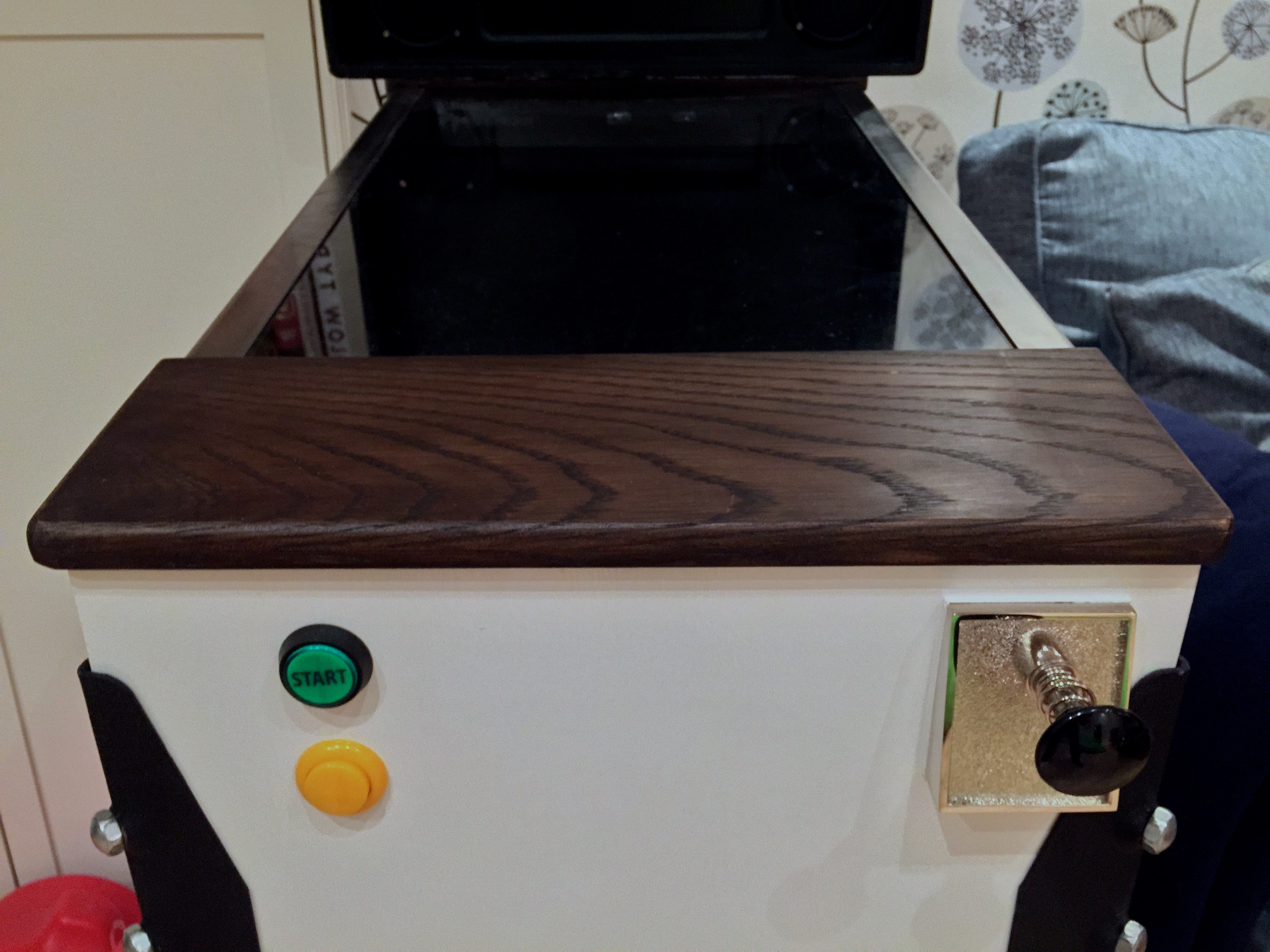
My painting process was like this:
I used a high gloss, white, water based laquer paint (Alcro Servalac Exklusiv Högblank). I ended up using two small cans.
Since I painted one surface at a time, it took almost a month to complete.
I had one near disaster at the start of the painting, when I had the backbox sitting next to the main cabinet as I was painting (slowly and carefully) with the roller. When I looked up, the paint had splattered on the backbox monitor (to whose dimensions the backbox was built)!
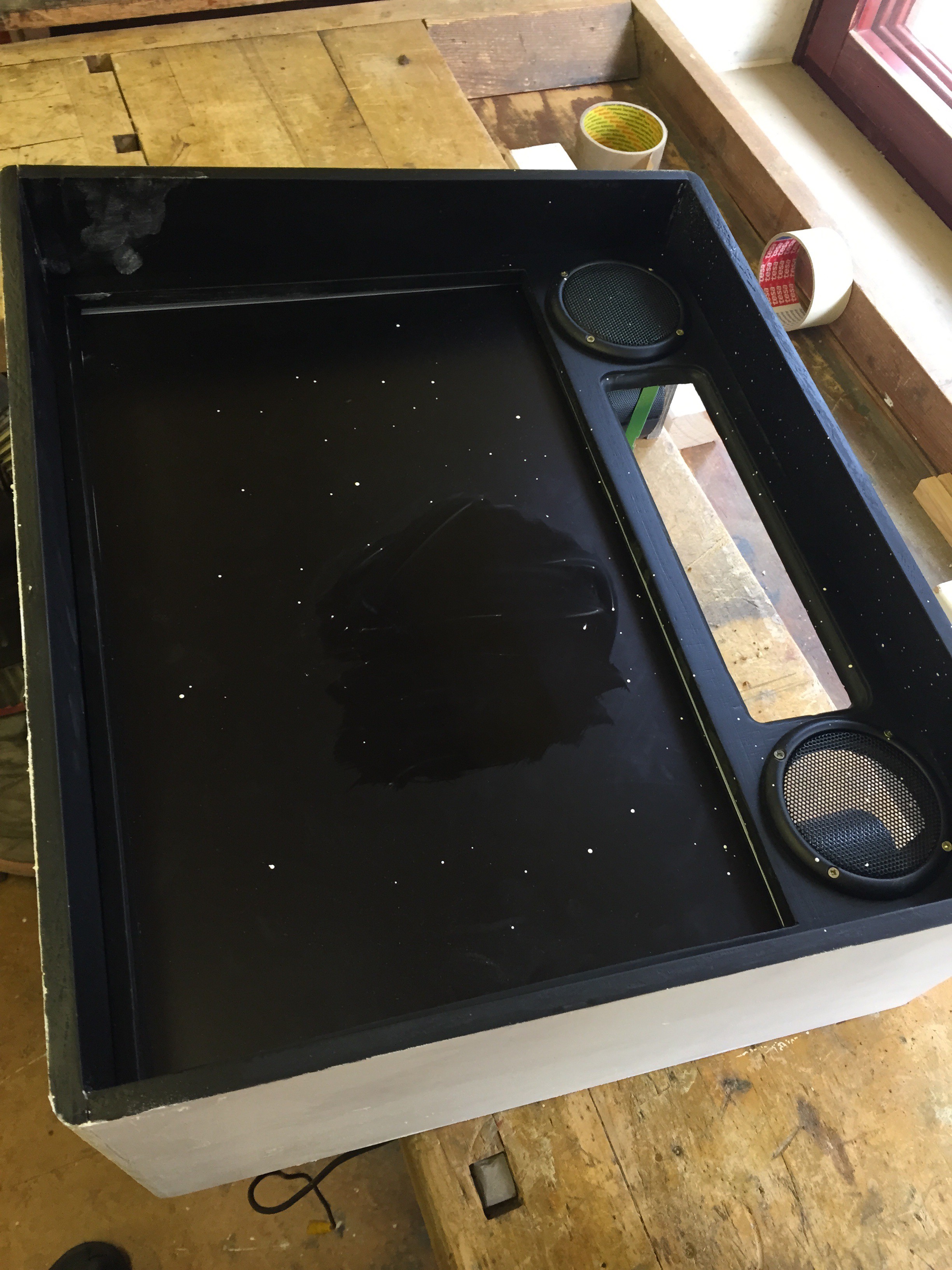
I got the solvent for the paint (turpentine) and tried to wipe the paint off the backbox, hoping that the thinner wouldn't dissolve the plastic on the monitor screen. I managed to save it.
My goal was a glossy white and black cabinet that would blend into our living room.
While researching painting the cabinet, I ran into web pages about vinyl foil used to change the color of cars, and wrap speaker cabinets. I bought a sample piece from the Internet (3M product 1080), made a miniature wooden piece with a similar shape to the backbox, and applied the vinyl over a sanding primer to test how it would turn out:
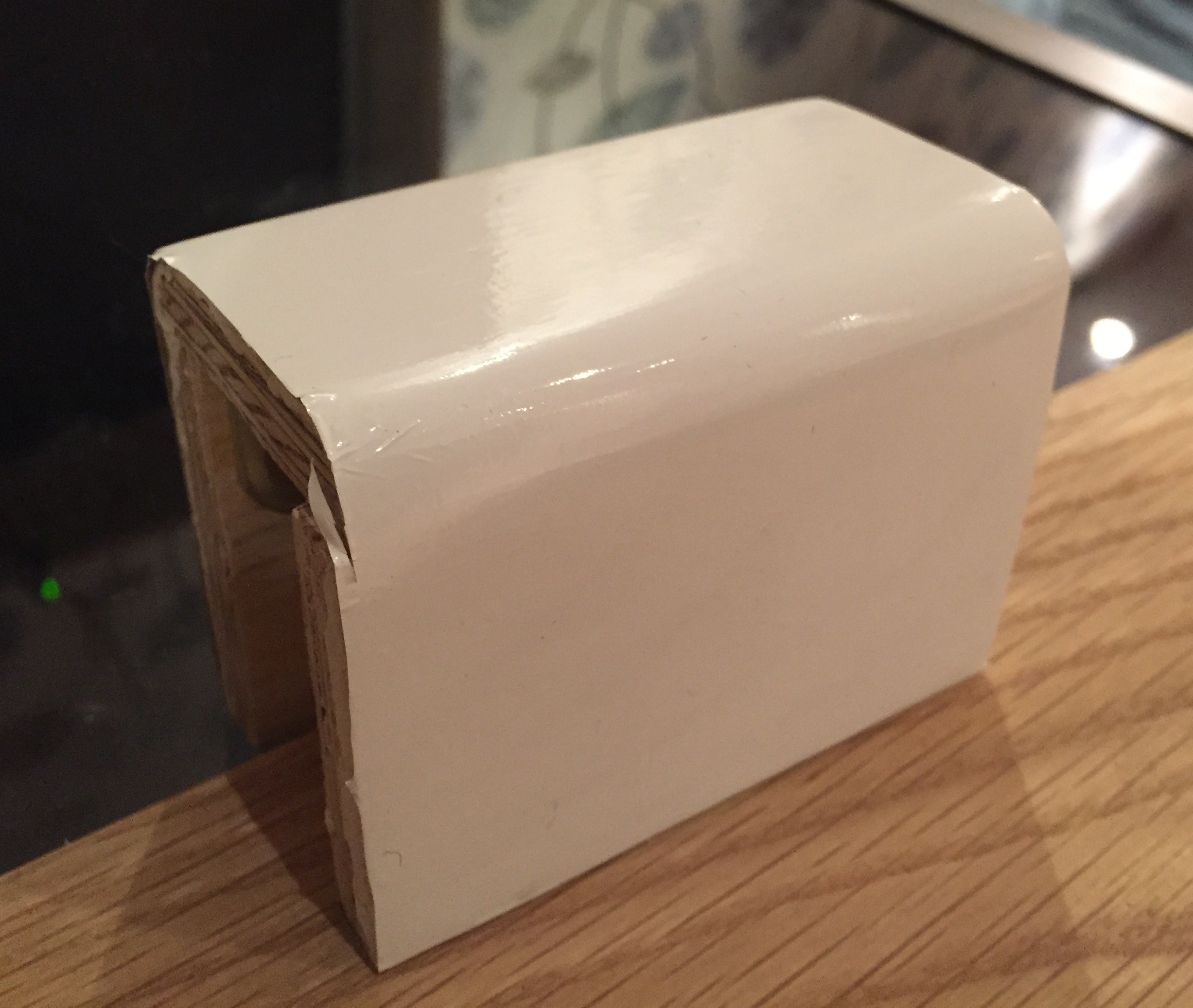
It turned out quite well (although despite careful sanding it did not hide all the structure of the wood).
After deciding to go with the foil, I discovered that I'd need a 2m piece to wrap the main cabinet in a single piece, but the foil rolls are only 152 cm wide, and I did not find a place willing to sell me a 2m wide x 40 cm strip. So I abandoned this plan and went with paint instead.
I painted the backbox first, to learn and test what worked.
I first painted the mask and inside of the front with matte black spray paint (not a good picture):
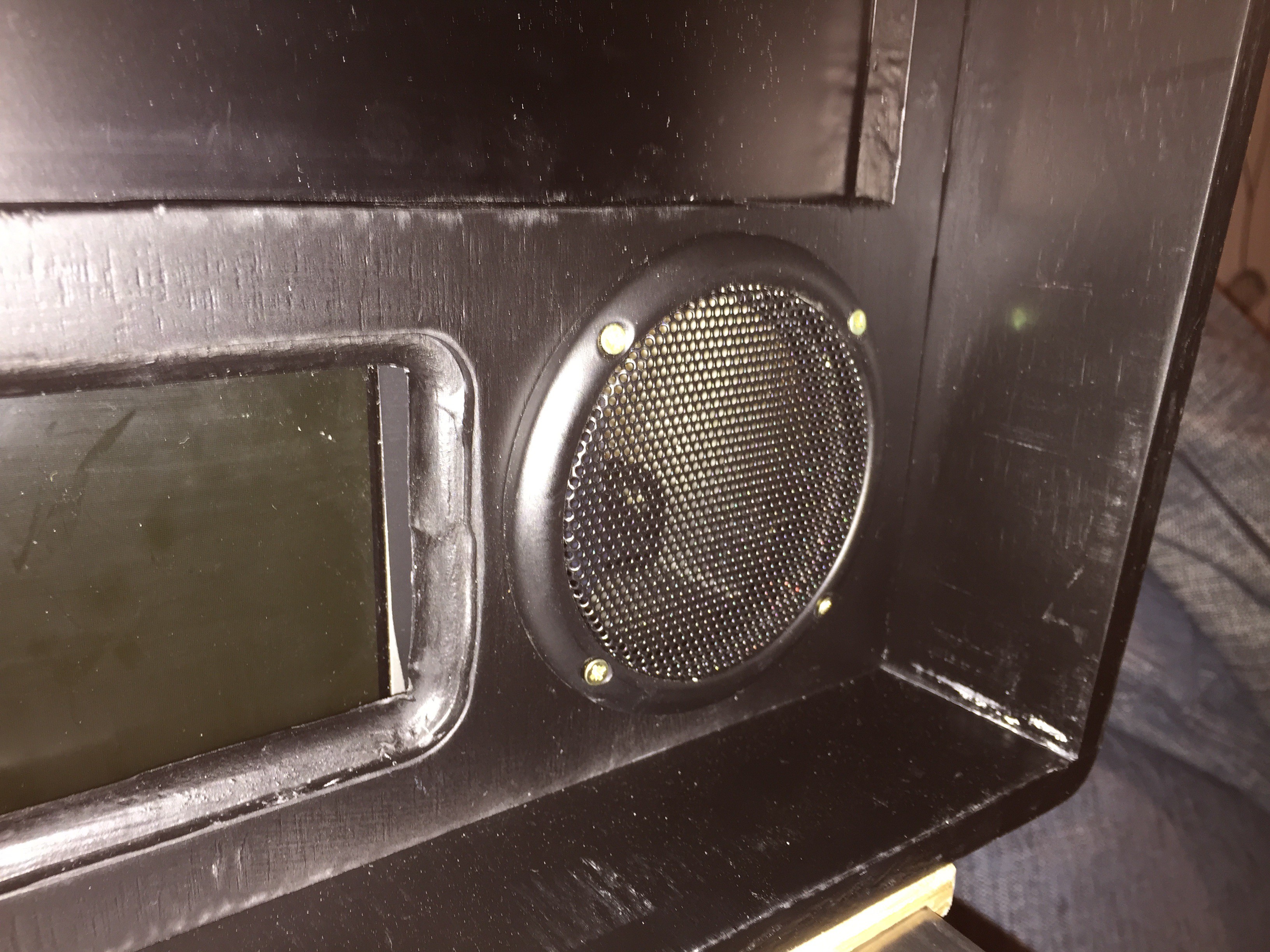
Drilling the holes for the leg bolts was tricky. They had to line up exactly with the threaded holes of the leg brackets, and went out through the corners of the cabinet.
The technique I ended up using was to flatten the outside of the corner, then drill with a small pilot drill from inside the box, through the threaded holes of the brackets, and then out through the corner. I then drilled back in with a bigger drill.
It wasn't very pretty, but the legs themselves cover the areas around the holes, so it's not visible.
Flattened corner:
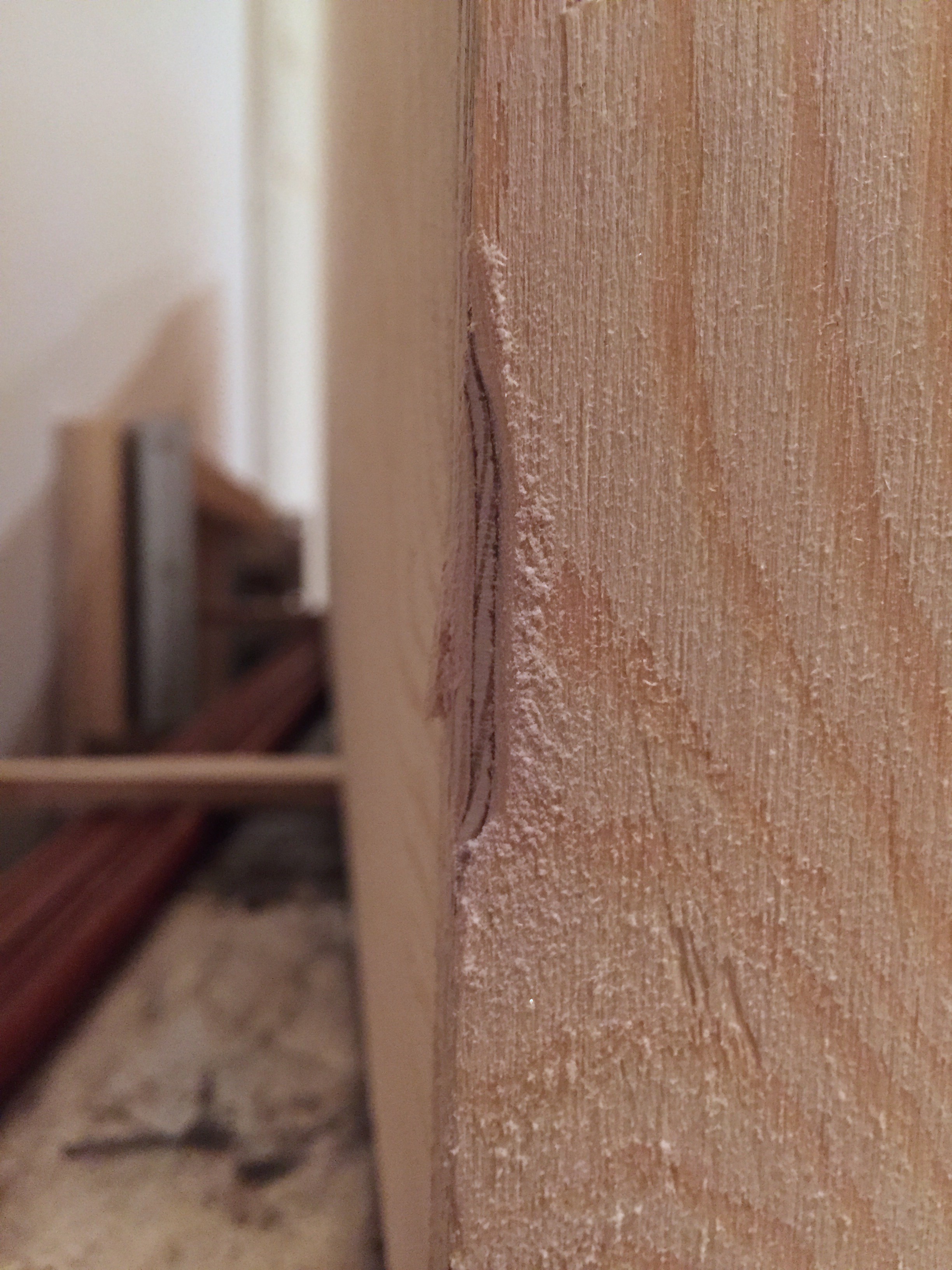
Ugly leg bolt holes from the outside:
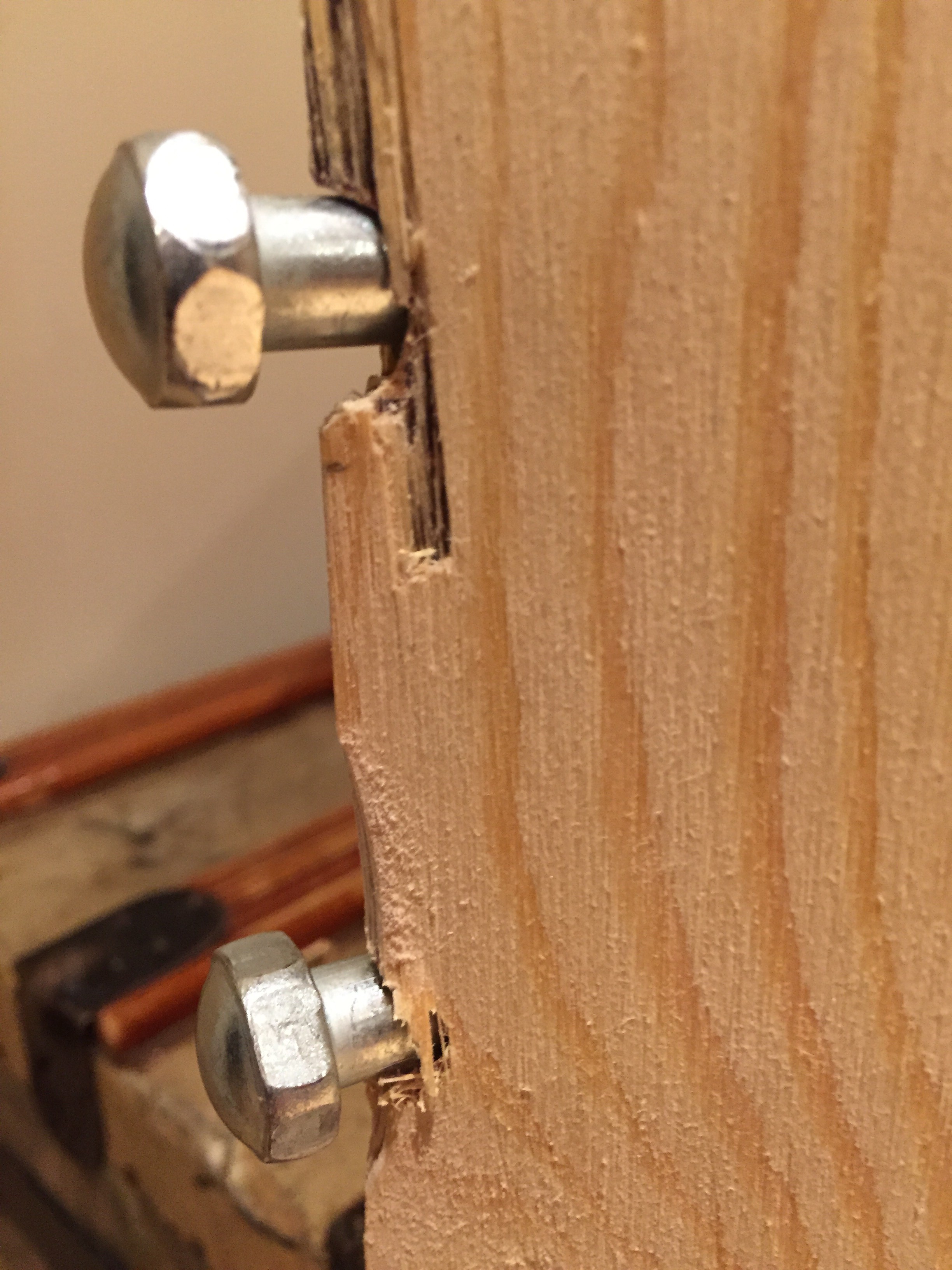
I got some help from my son to tighten mount the legs:
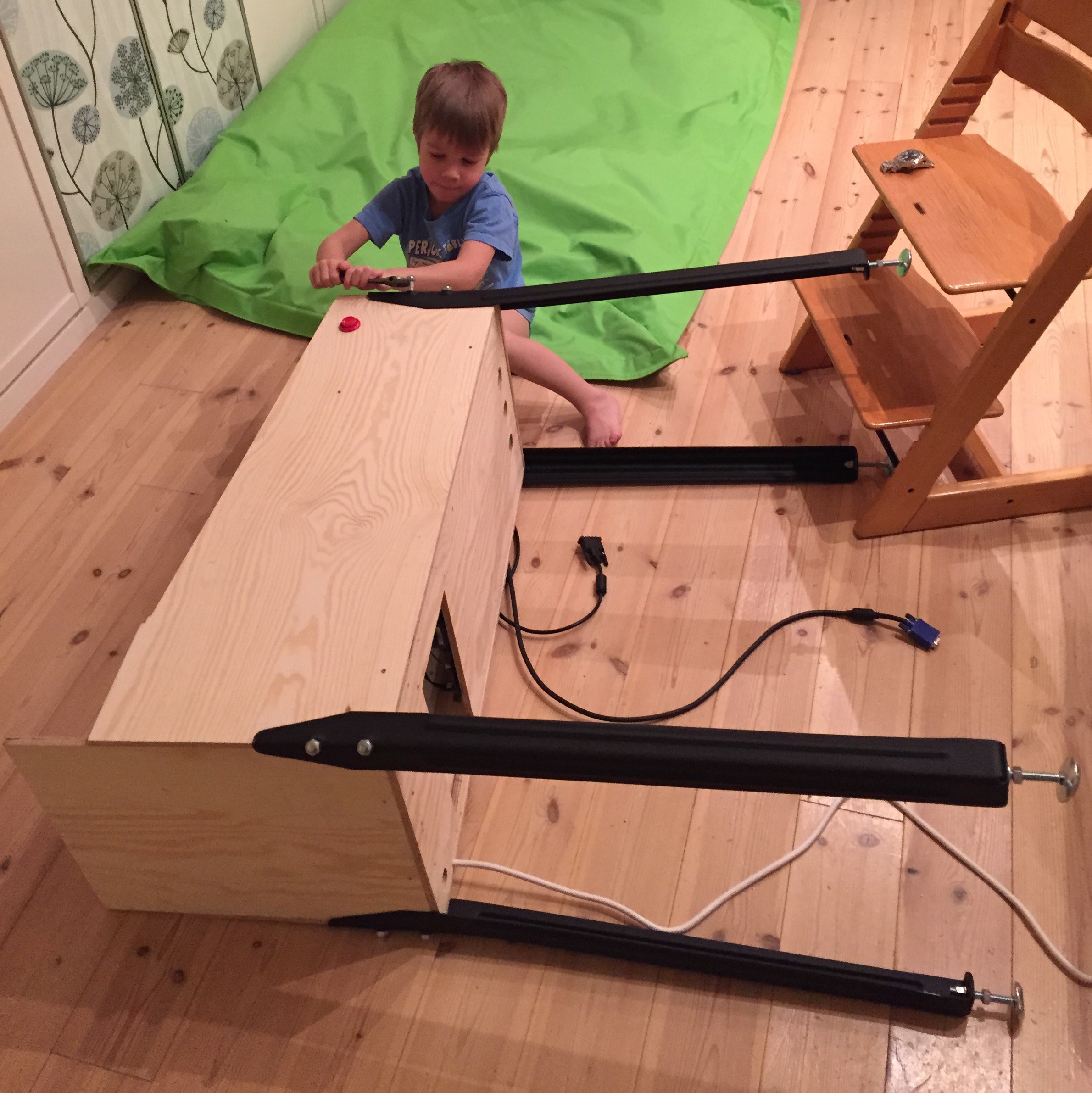
At about this time, I discovered the first mistake the plunger overlapped one of the front legs, so it wouldn't sit flush against the plywood. I fixed it by sawing a 3 mm thick piece of MDF to sit behind the plunger:
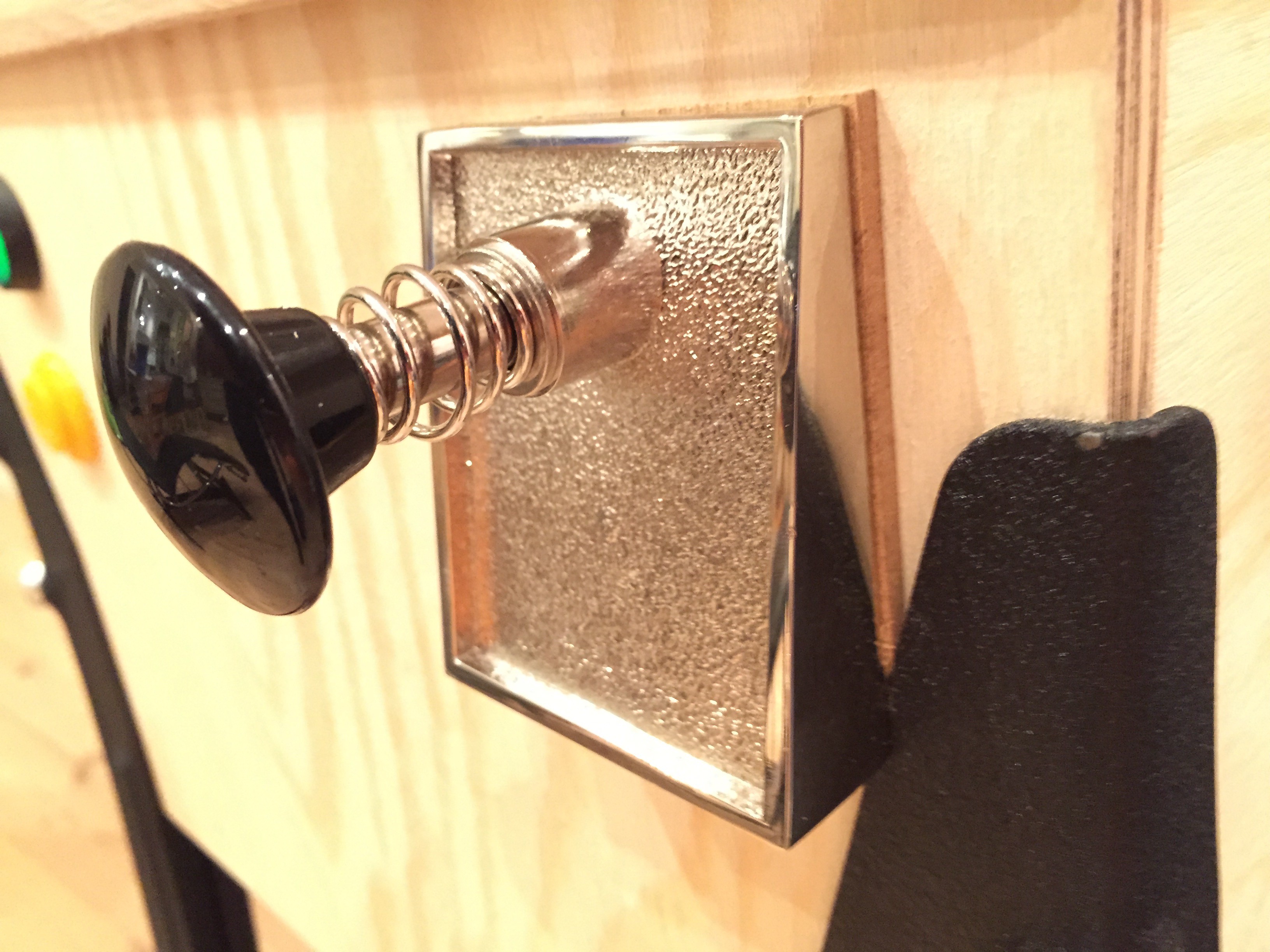
February 20
Next I built the backbox housing the monitor behind the game, the main stereo speakers, and showing the DMD (Dot Matrix Display) monitor.
The frame is held together by small metal brackets:
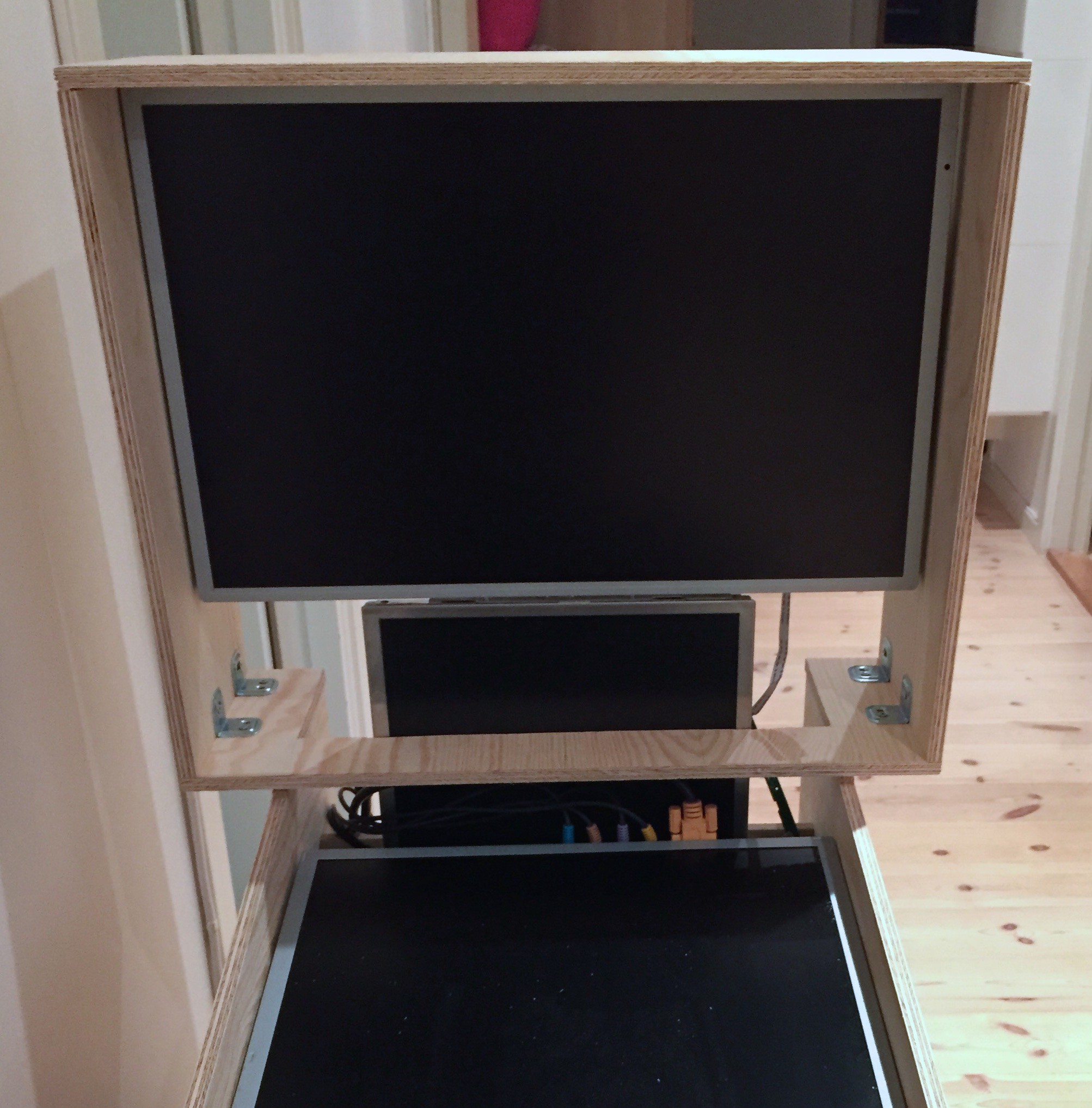
The trickiest part was sawing the holes in the "mask":
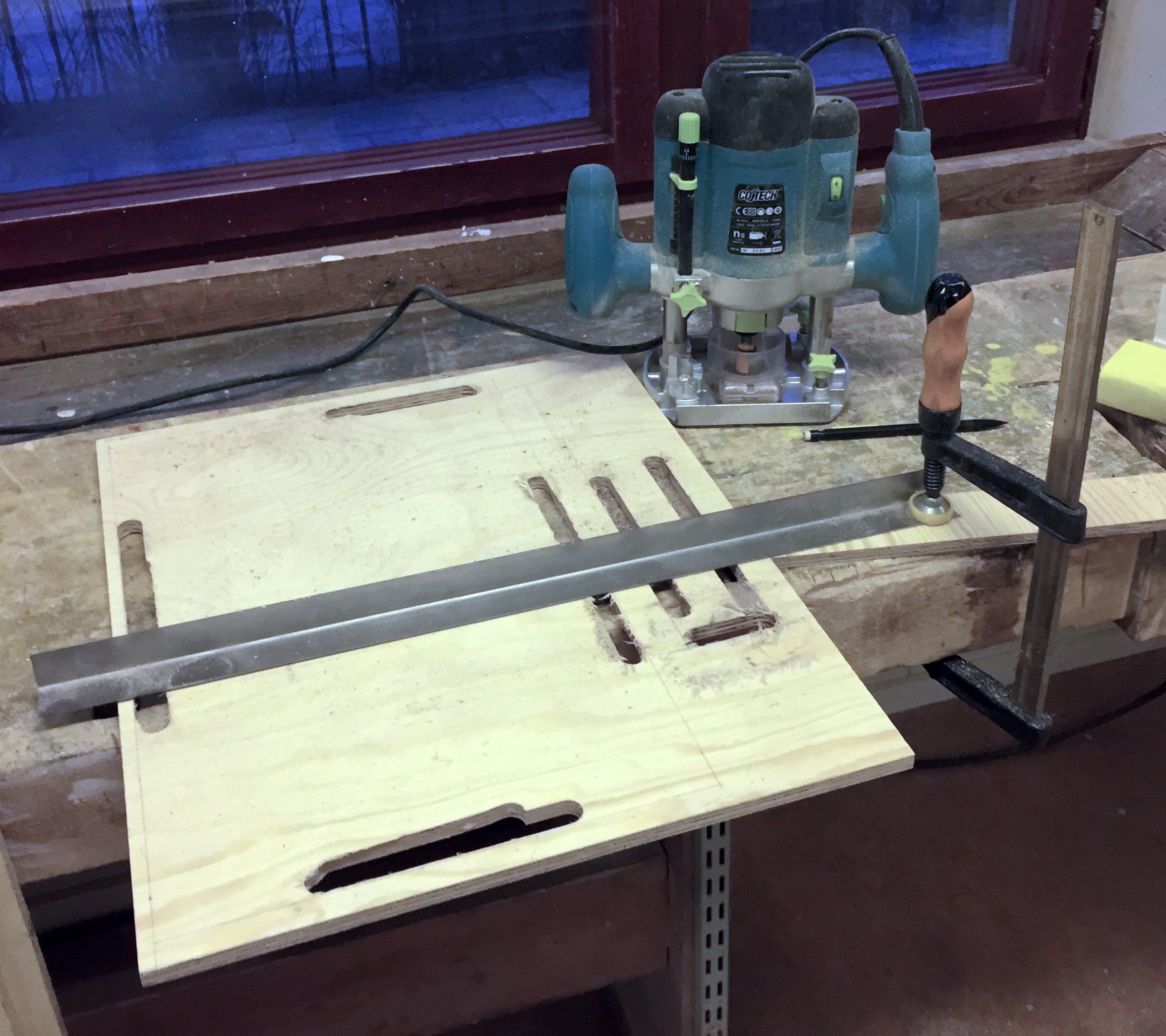
Here's the result:
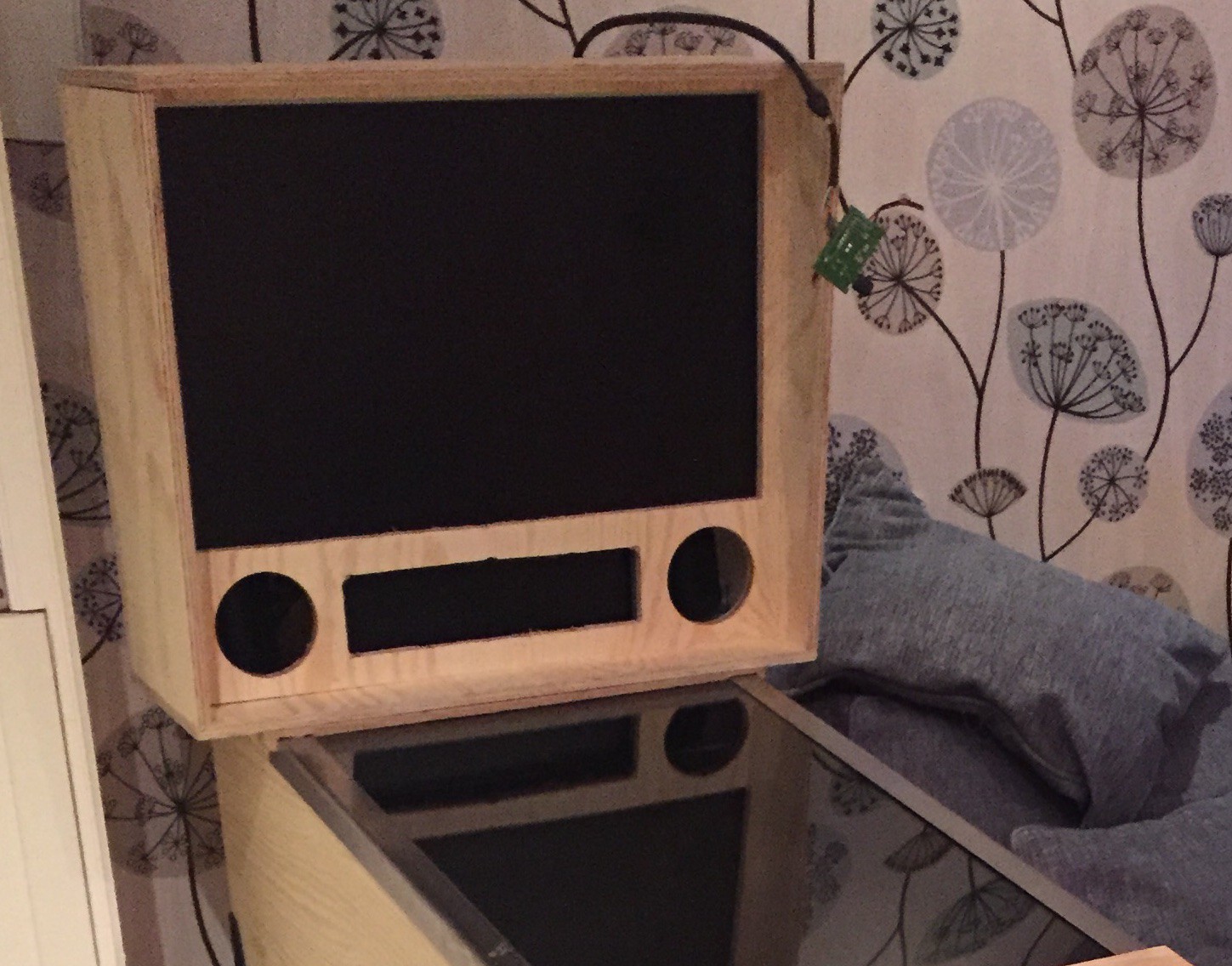
I later routed the frame of the DMD window.
February 13, 2015
Real pinball cabinets have a metal bar across the top of the front of the pinball cabinet, where players rest their hands. It is also the keystone piece — to open the cabinet, the coin door is opened to release the lockdown bar, which then allows the removal of the glass, and opening the play field:
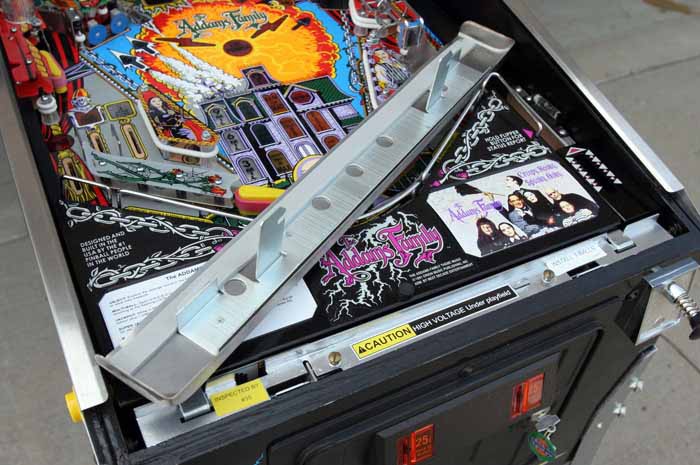
A regular lockdown bar wouldn't fit my cabinet, since it is smaller than a standard pinball cabinet. I didn't have access to metalworking tools, so I made my own lockdown bar out of some oak boards.
I took one board, and used a router to make slots where the glass and side rails would be:
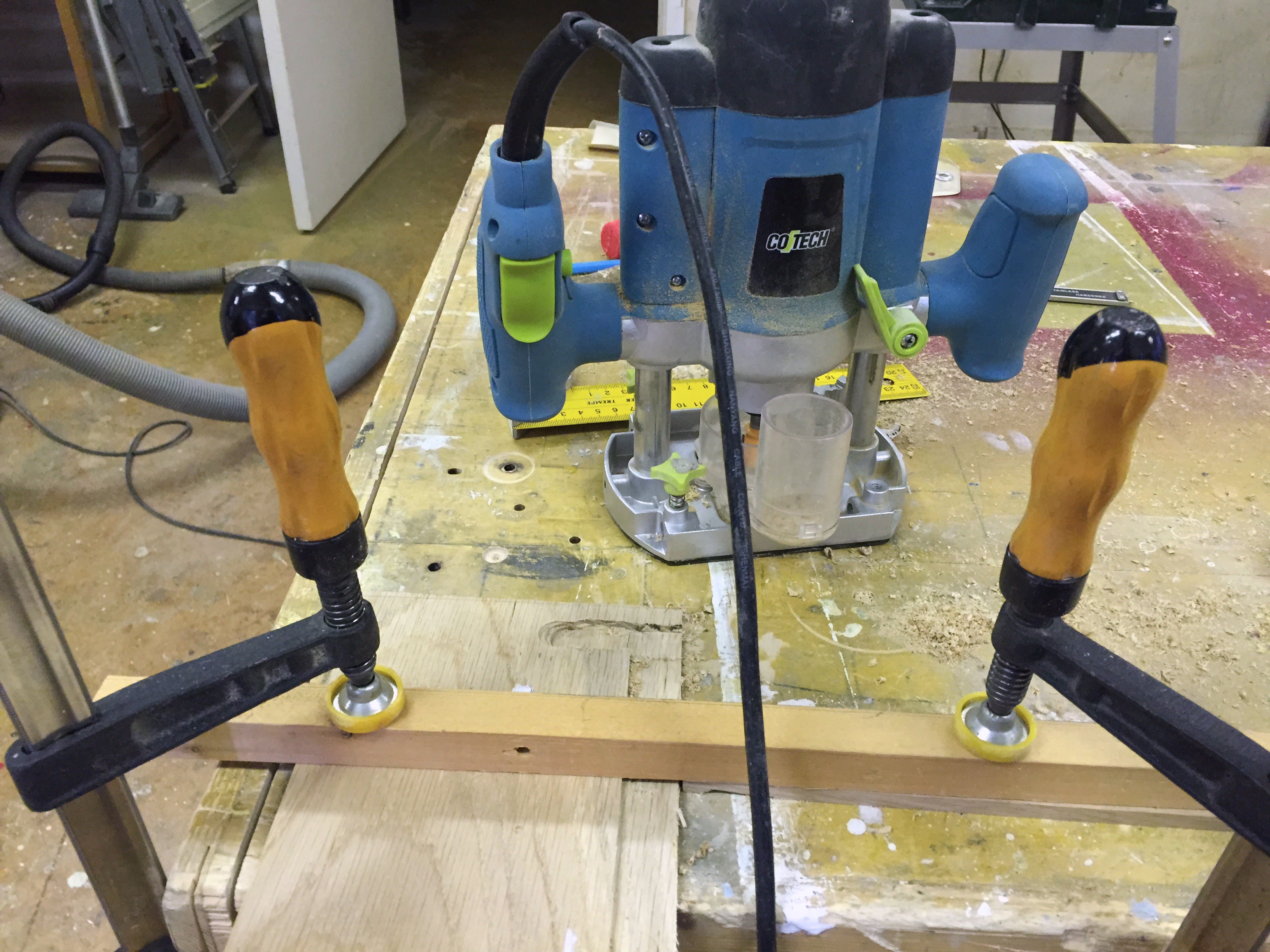
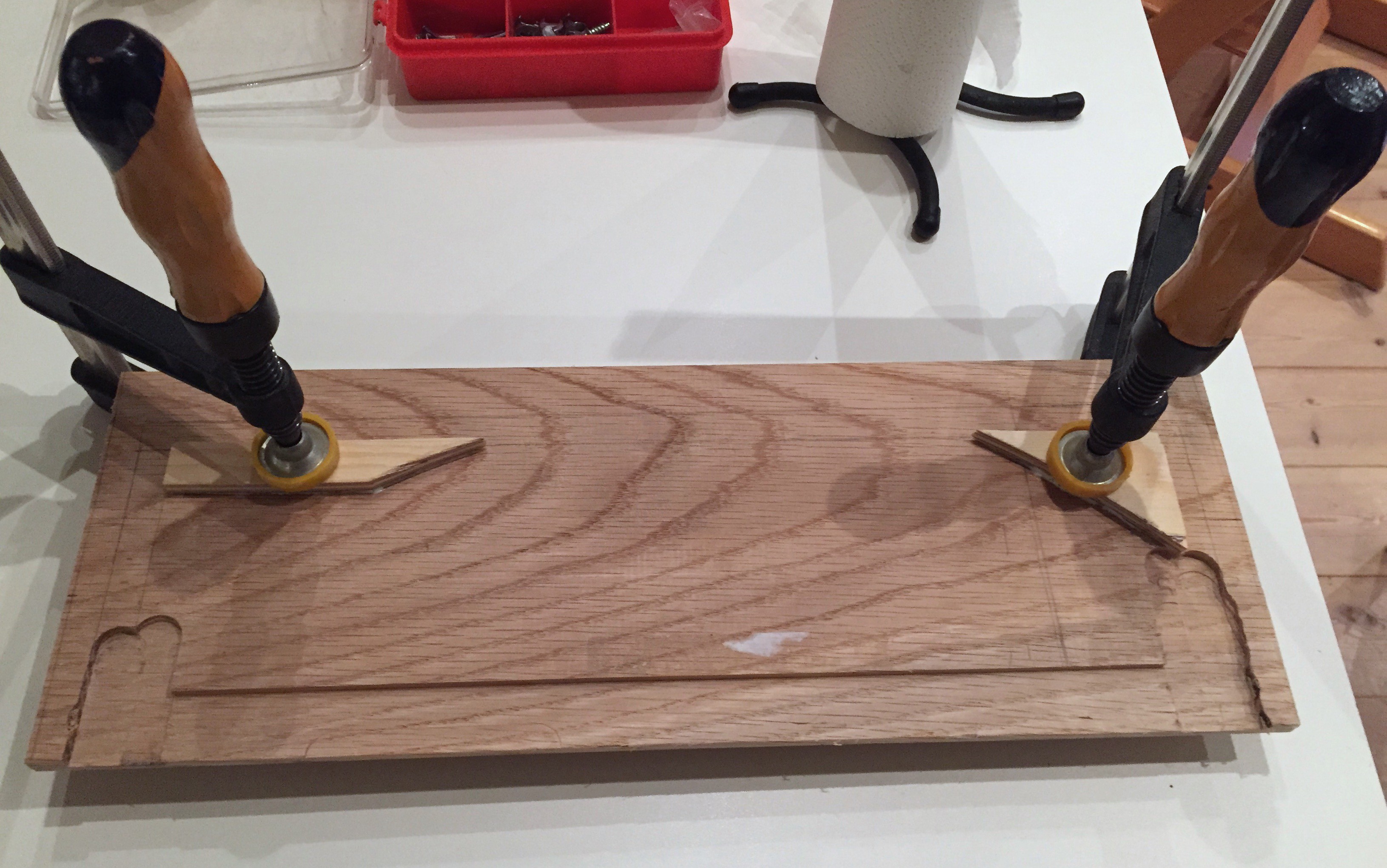
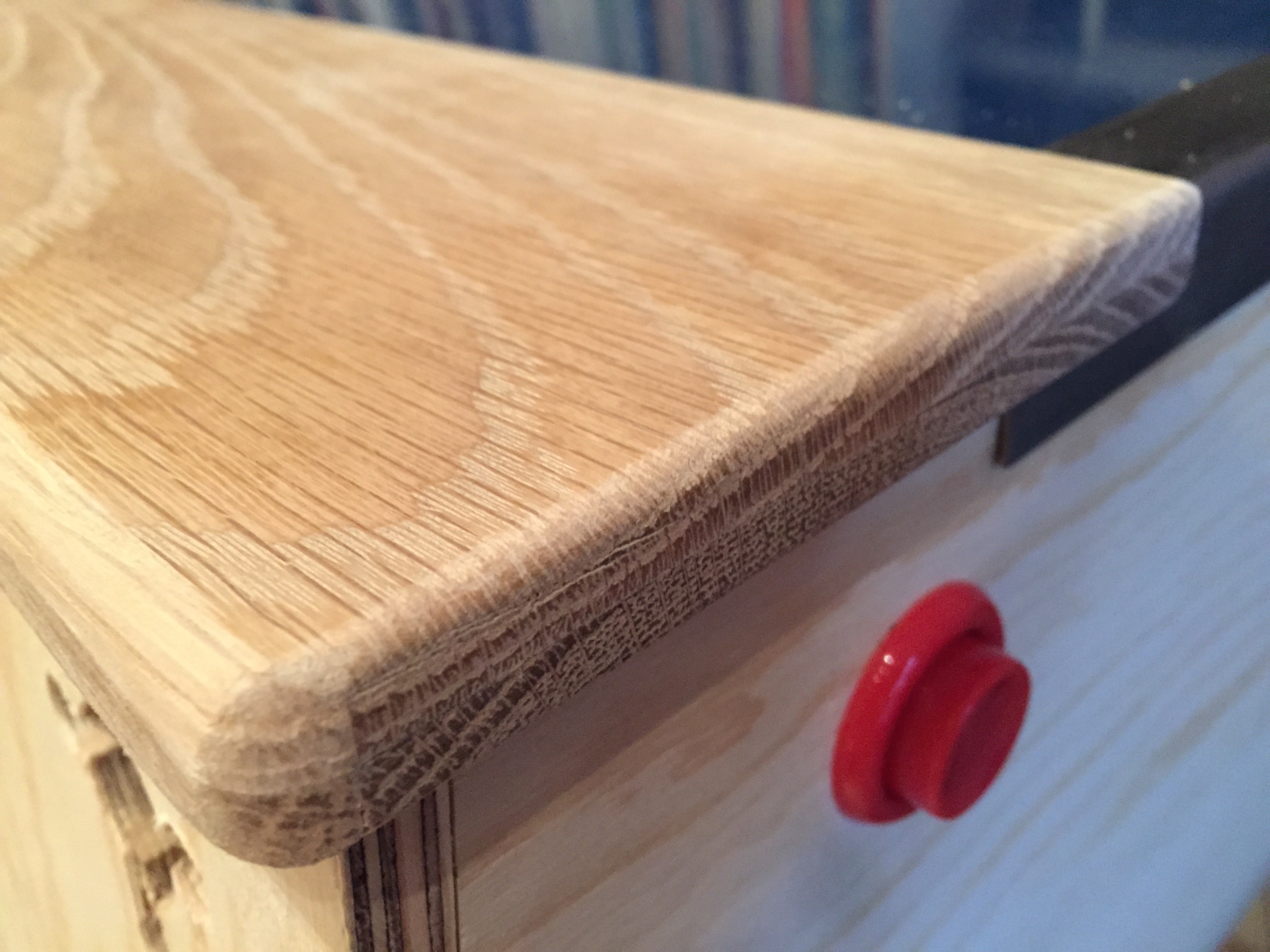
I bought a small Arduino clone, a Pololu A-Star 32U4 Micro, to handle the button presses, sense the plunger movements and read the accellerometer that will sense the cabinet being pushed. It was 99 SEK (€ 11).
It will appear to the computer as a USB keyboard and joystick.
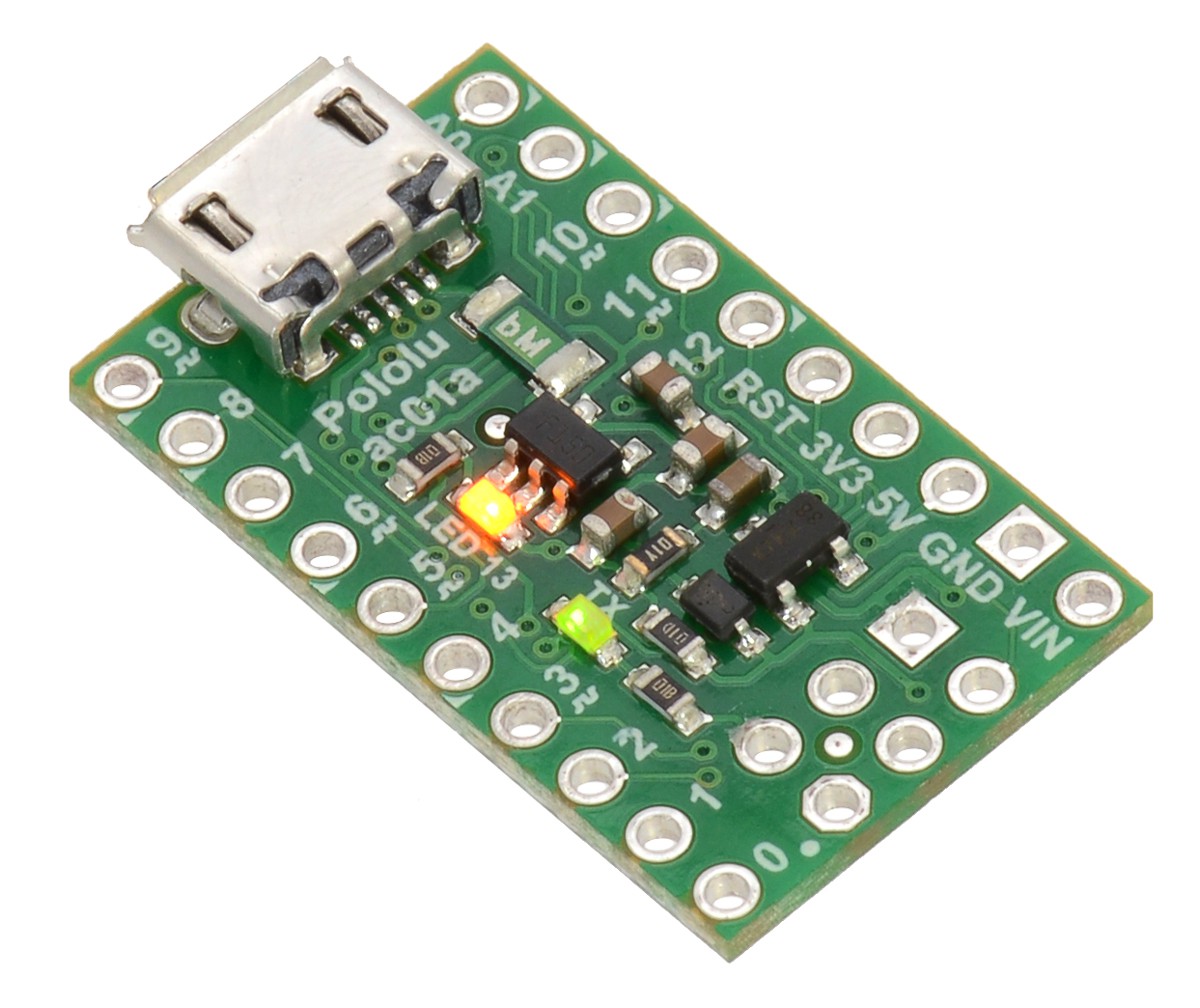
To sense the plunger positions, I bought a Sharp GP2Y0A41SK0F IR distance sensor for 105 SEK (€ 11). It has an analog output.
I got an ADXL345 accelerometer from E-bay for €5.12. It uses SPI. It needs resistor dividers to level shift the 5V of the microcontroller to the 3.3V of the accelerometer.
I used the built-in pull-up resistors of the 32u4 chip for the switches, so I tied one pole of all the buttons (start, exit, right flipper, left flipper) to ground, and the other to an microcontroller pin.
The plunger distance and accelerometer signals are presented to the PC as joystick inputs on axes Z and X and Y respectively. In order to do this I used a very useful Arduino HID project.
The IR sensor signal is quite noisy, but with some software filtering I think I have gotten it to work reasonably well.
The source code is in my GitHub repository.
I mounted the various components on a stripboard. The green board is the microcontroller, and the blue board is the accelerometer. The buttons are connected to the screw terminals. Some of the voltage divider resistors are underneath the accelerometer board.
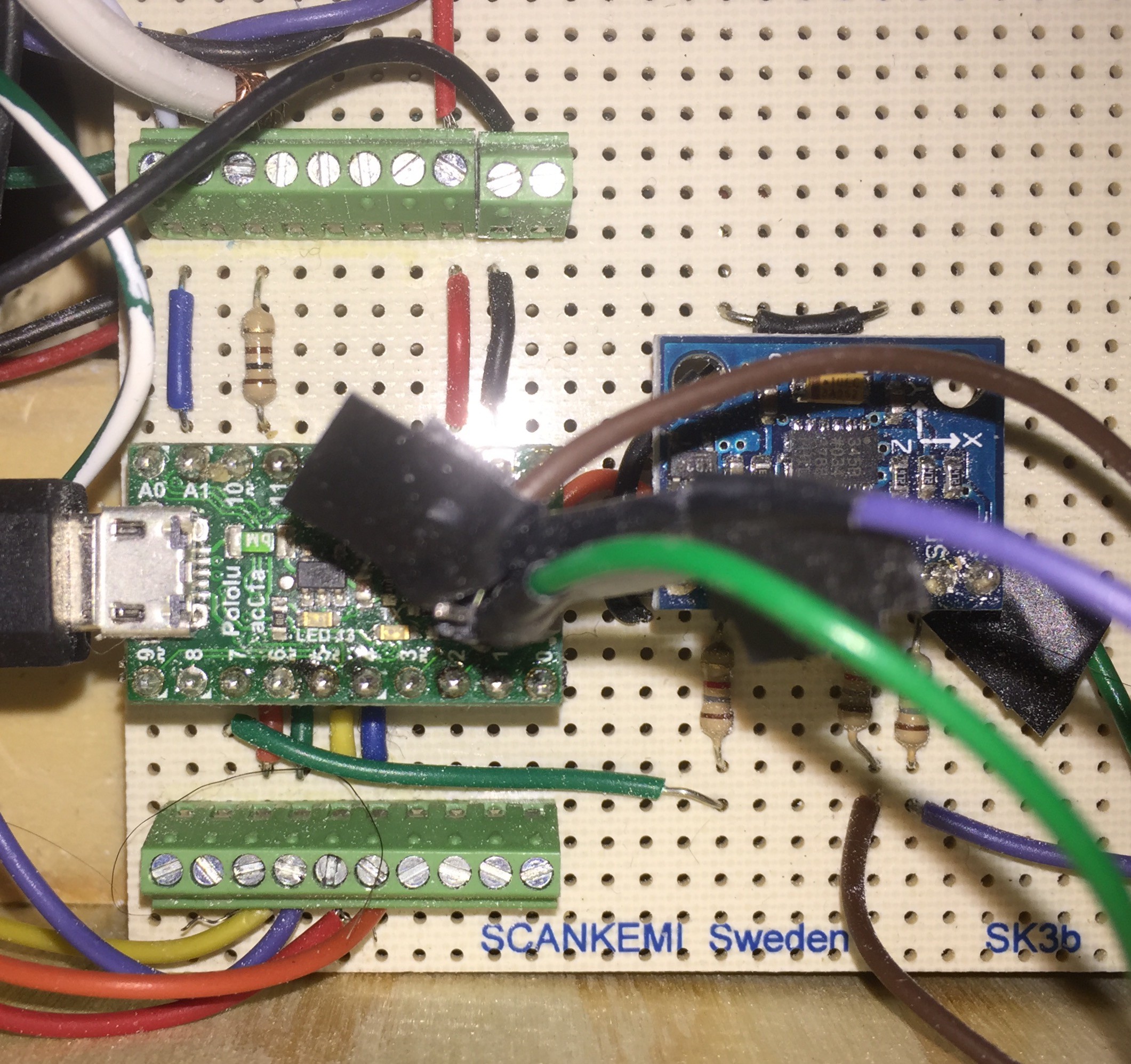
This ended up being quite an inexpensive solution. There are commercial solutions, such as the VirtuaPin™ Digital Plunger Kit v2, but it is $160 which is much more expensive than my solution.
In the future, an idea I have is to control the volume by connecting a rotary encoder to the microcontroller, and have the microcontroller send volume up and volume down media control keys to the PC. This way the volume should be controllable in the same way regardless of whether the headphone output or speakers are used.
January 23, 2015
I mounted my motherboard directly on the plywood bottom, and the hard drive next to it.
In the picture below the plunger is at the bottom left, the two front satellite speakers are the black pieces to the right next to it. The hard drive is above the lower satellite speaker. The big black box at the right is the subwoofer. To the top left of the subwoofer is the PSU. It is placed high up so that the fan drives the hot air back behind the subwoofer.

Here's a side view:

The wooden crossbar serves as a support for the playfield monitor electronics box, which did not stay attached to the monitor itself after I decased it. It also supports the distance sensor aimed at the plunger.
The 15" DMD monitor was installed in portrait orientation behind the subwoofer. Lots of cables!
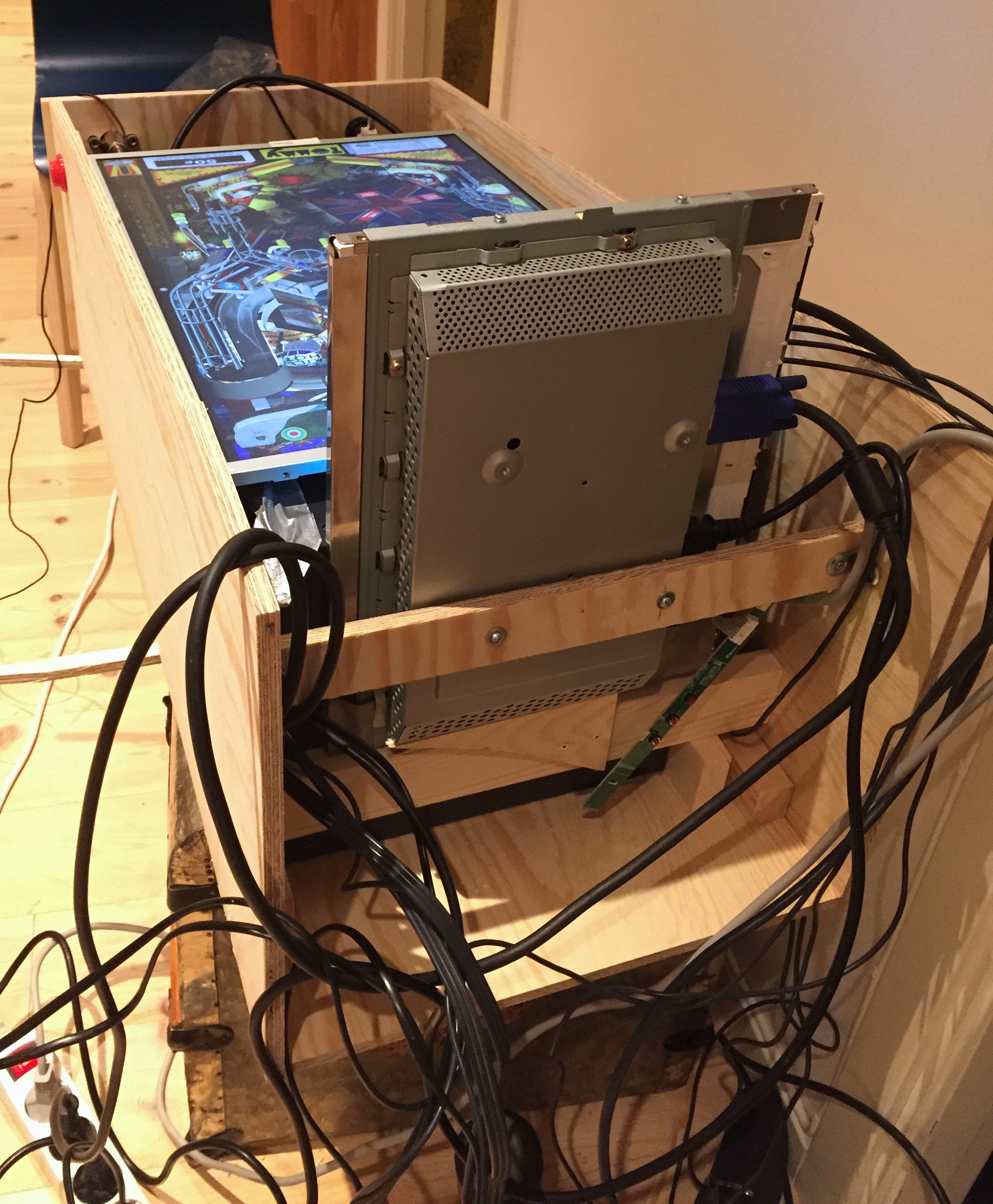
Create an account to leave a comment. Already have an account? Log In.
this furniture is looking very attractive art i am very happy to see this i am also doing some e commerce website with similar content you can see here https://tcl365.ie/
I like this project, congratulations. But I'm not sure to understand the arduino project. Can you post a breadboard layout or more pictures of your electronic project?
Most games run quite OK, with the occasional minor stutter.
What games you play probably influence the performance (I mostly play games from the 90's).
What you find acceptable is probably a quite personal preference.
Is HD530 integrated graphics? I recommend you do what I did - buy the motherboard, test if you find the performance acceptable, and if not add a discrete graphics card. Of course you can test the hardware 'on the bench' before you're built the cabinet.
The different Visual Pinball versions are quite confusing - sometimes older versions may have better performance, despite documentation saying that newer versions have improved performance.
IMHO, people exaggerate the need for discrete graphics cards.
Good luck with your build!
Thanks for the reply - as you suggest I think I'll go ahead and try it with integrated graphics (HD530 is on the intel skylake chips). All I know for sure is that it doesn't play on my current old core2duo system.
How do you find visual pinball runs on the integrated graphics? I'm planning a build and would like to use intel HD530 but most forums seem to recommend a GTX960.
Excellent. I would have added a coin slot so that the kids would need to spend to use it. What they wouldn't know is that inside is their savings bank so after a few months you crack it open and show them how much money they've saved! This all falls down of course if they pester you for the coins in the first place...
Become a member to follow this project and never miss any updates
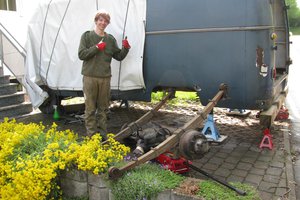
 rawe
rawe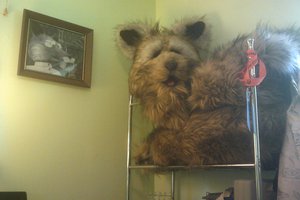
 Dr. Cockroach
Dr. Cockroach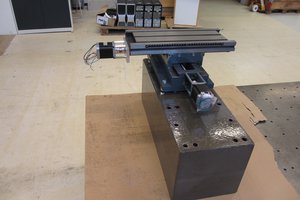
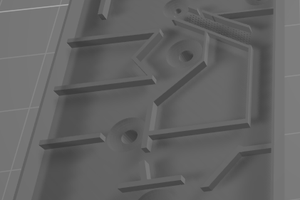
Sound good. I want to see the scripts of this program. I'm working on similar project and I want to modify it with my project, see detail here https://shoesuggestions.com/best-shoes-for-walking-and-standing-on-concrete/